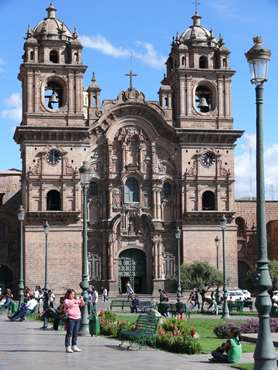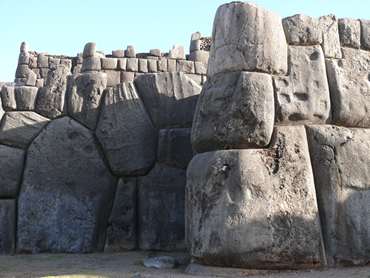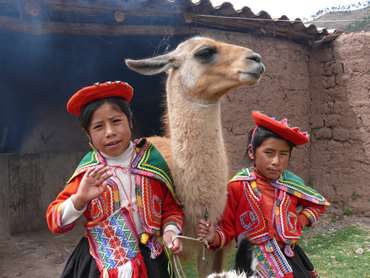CUSCO

|
Cusco, known by the Incas as the “Navel of the World”, is
a colourful sprawling City of many facets, with the Cathedral and Plaza de Armas
the hub of the colonial centre, and many buildings are built on the Inca
foundations. We lost ourselves in the very pretty narrow streets, particularly
in the trendy artist area of San Blas. Although we cannot understand who would
by such tacky and garish pictures. Someone must because we shared a taxi with a
young artist, who showed us his catalogue from a University Exhibition and his
paintings (priced at 1800 dollars) were beautiful, and yet his portfolio for the
tourists was full of garishly coloured work. As he said he had to live!
The City Tour took us to Koricaucha. Extraordinary Inca stonework underlying
the foundation Santo Domingo a 17 sanctuary Baroque church. The whole
Inca complex, in its hay days, had it’s inside walls covered in Gold, hence the
Temple’s name “Golden enclosure”. No wonder the Spaniards could not believe
their eyes when they reached the site. They plundered and melted the gold and sent it back to Spain.
Again we were under time constraint and we were disappointed that our visit was
so rushed.
Next we saw Sacsayhuaman (easily remembered as sexy
woman) This fortress is claimed to be one of South America’s archaeological
treasures The sheer size of the stones is overwhelming. The Inca race, although
very short (5ft max) was extremely strong, no doubt necessary for carrying such
weight but most importantly they had large lungs to compensate for
altitude.
A team of 1000 men were used to carry these stones
Each stones were carved to interlock with each
other
Each time our coach stopped, we were surrounded by
children begging to have their picture taken in exchange for a few cents.
This exploitation of children by their parents at such a
young age is inevitable in such a poor society. In villages we saw very young children carrying heavy
loads and large water pitchers as part of their family culture.
Chris & Geraldine
|









